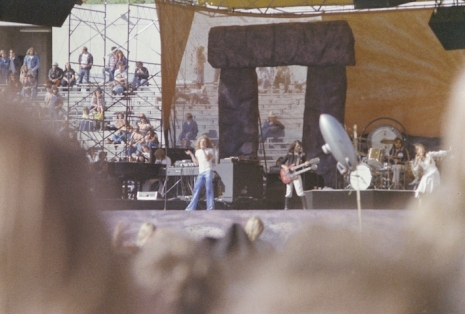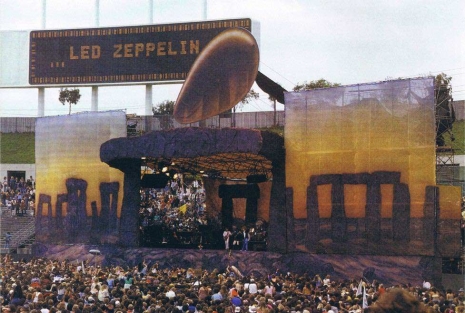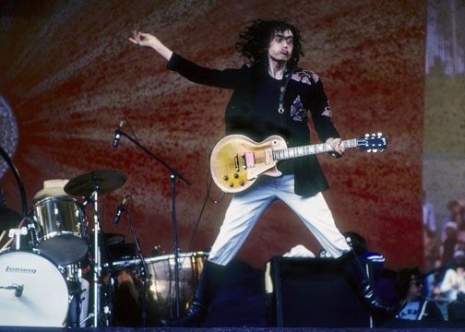
Led Zeppelin’s eleventh—and final—American jaunt was in support of their seventh studio album, Presence. The 1977 tour was plagued by unfortunate incidents, with the most notorious occurrences taking place backstage at one of the last shows and a most tragic event bringing an end to the outing.
The vibes were bad before they even played a single gig. Large, menacing manager Peter Grant had recently gone through a nasty divorce, while guitarist Jimmy Page was incredibly thin, reportedly in the throes of heroin addiction. Throughout the tour, police had to be brought in to quell audience violence, culminating in a riot in Tampa; nineteen were arrested, 50 were injured. At multiple stops, a new crop of younger, wilder fans threw lit firecrackers on the stage, which would explode inches from the band members. During a Cincinnati show, a fan died after falling from the third level of the coliseum—the first tragic event of the tour.
The trek was to run for three legs of dates from April through August. For the final leg, eleven stadium shows were scheduled. The band only played four.

On July 23rd and 24th, Zeppelin performed in front of sell-out crowds at Oakland Coliseum. Rick Derringer and Judas Priest opened. The shows were part of the recurring “Day on the Green” concerts organized by Bill Graham. The stage set was constructed to resemble the Stonehenge monument, and was likely the main inspiration for one of the funniest moments in the brilliant mockumentary, This Is Spinal Tap (and before you say, “But what about…,” we debunked the theory that Black Sabbath’s Stonehenge stage influenced the film).

Two nasty backstage episodes took place on the 23rd. The first happened when Peter Grant was asked by a member of Graham’s crew if he needed help getting down some stairs, which Grant perceived as a slight on his weight. John Bindon, a London gangster brought on by Zep as their chief enforcer for the tour, stepped in and knocked out the stagehand, who banged his head on the concrete floor. Later, Grant’s teenage son was about to remove a temporary sign to keep as a souvenir, but was sternly rebuffed by a member of Graham’s security team. This prompted drummer John Bonham to kick the guy in the balls, and then Grant and Bindon beat the man so badly that a shocked Graham had him rushed to the hospital. Graham also claimed that his production manager was hit on the head with a lead pipe.
On the 24th, Graham’s security were looking for revenge, yet the show concluded without further incident. The following day at the band’s hotel, the SWAT team showed up and arrested Bonham, Grant, Bindon and tour manager, Richard Cole, who were charged with assault. After they were bailed out, the Zep entourage flew to New Orleans for the next show. Once they were settled in, Plant received a call from his wife and learned that his young son, Karac, had died suddenly on the 24th. Plant immediately flew home to England. Led Zeppelin would never play stateside again.

Jimmy Page plays the final note of the final U.S. show.
Footage from the July 23rd gig is available online. This first video appears to be professionally filmed, perhaps for a TV news piece. The first note of the Zeppelin show is heard at the 5:55 mark. At 6:10, the camera zooms in for a closer look at the band and the Stonehenge stage set.
8mm clip:
A split-screen composite:
More footage shot on 8mm:
Audio recordings of both shows: